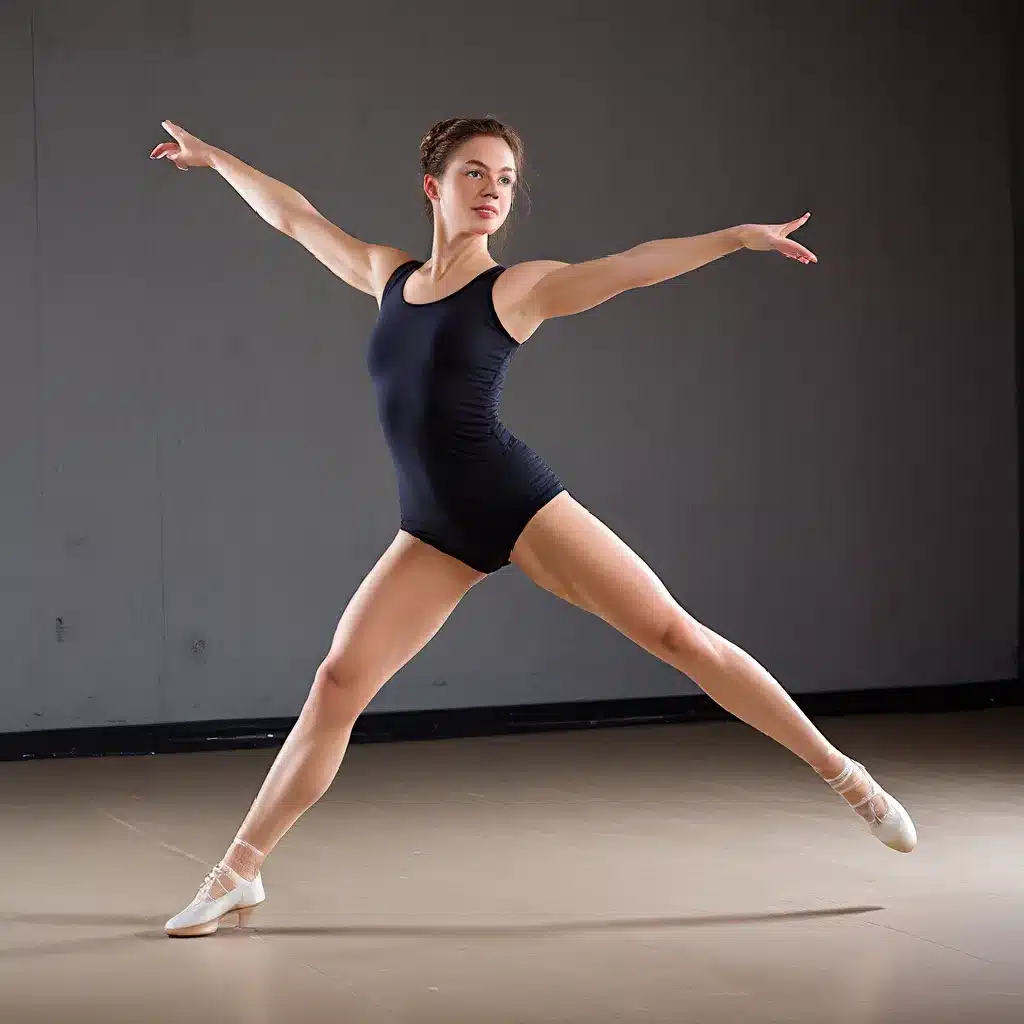
Unleashing Your Inner Dance Superhero
Ah, the life of a dancer – graceful movements, thunderous applause, and let’s not forget the occasional wardrobe malfunction. But beneath the glitz and glamour, there’s a secret to maintaining that superhuman agility: high-impact exercises. And trust me, as a lifelong dance enthusiast, I’ve tried it all, from pirouettes to plies (and the occasional tripping over my own two feet).
The Importance of Agility for Dancers
In the world of musical theater, agility is the name of the game. Whether you’re leaping across the stage, spinning like a tornado, or navigating a complex choreography, your ability to move with lightning-fast reflexes and precision can make or break a performance. And let’s not forget the stamina required to keep up with those high-octane numbers – you don’t want to be the one panting in the back row while your castmates are still going strong.
But agility isn’t just about impressing the audience; it’s also a crucial element of injury prevention. As a dancer, you’re constantly pushing your body to its limits, and without the proper training and conditioning, those wear-and-tear injuries can sideline you faster than you can say “jazz hands.” That’s why it’s essential to incorporate high-impact exercises into your routine, to build the strength, power, and coordination needed to tackle even the most demanding dance routines.
Plyometric Exercises: The Secret to Agility
If you’re looking to take your dance game to the next level, plyometric exercises should be your new best friend. These high-intensity, explosive movements are designed to boost your power, coordination, and overall athletic performance. And the best part? They’re the perfect complement to your regular dance training.
According to the experts at E3 Rehab, plyometric exercises can be divided into four stages, each with its own set of challenges and benefits. Let’s dive in, shall we?
Stage 1: Laying the Foundation
In this introductory stage, the focus is on building a strong foundation for more advanced plyometric exercises. Think sub-maximal squat jumps, lunge push-backs, and step-up jumps. The key here is to master the proper form and control, while also getting your body accustomed to the increased impact forces.
One of the great things about this stage is the flexibility to experiment with different surfaces. For example, the experts recommend trying these exercises on softer surfaces like a pool or a padded mat, to help reduce the impact on your joints and muscles. This can be especially helpful if you’re recovering from an injury or just starting to incorporate plyometrics into your routine.
Stage 2: Ramping Up the Intensity
Once you’ve nailed the basics, it’s time to take things up a notch. In Stage 2, the plyometric exercises become more intense, with shorter ground reaction times and higher impact forces. Think maximal-height squat jumps, countermovement broad jumps, and split-squat jumps.
The goal here is to build power, strength, and rate of force development, all while honing your single-leg control and acceleration. The experts recommend gradually increasing the height and distance of your jumps, but always keeping an eye on your form and overall tolerance to the exercises.
Stage 3: Mastering Reactive Movements
As you progress, the plyometric exercises in Stage 3 become more complex and challenging. We’re talking about things like tuck jumps, rotational jumps, and single-leg drop jumps. These exercises are designed to prepare your body for the unpredictable nature of dance, where you need to be able to react quickly and explosively to changes in direction, rhythm, and tempo.
One of the key focuses in this stage is developing your single-leg power and coordination. The experts suggest starting with single-leg squat jumps and single-leg drop jumps, and gradually building up the height and complexity of the movements.
Stage 4: Bringing It All Together
In the final stage, the plyometric exercises are designed to mimic the demands of the stage, with a focus on reactive and sport-specific movements. This might include things like weighted squat jumps, lateral jumps with a medicine ball, and single-leg jumps over hurdles.
The key here is to challenge your body in ways that closely resemble the physical and mental demands of your dance performances. The experts recommend gradually increasing the volume and intensity of these exercises, while always keeping an eye on your form and overall tolerance.
Putting It All Together
Now, I know what you’re thinking: “But wait, how do I actually incorporate all of these plyometric exercises into my dance training?” Great question, my friend. The key is to start slow, listen to your body, and gradually increase the volume and intensity over time.
According to the experts, a good starting point might be 50 foot contacts per day, spread out over 2-4 training sessions per week. As you get stronger and more comfortable with the exercises, you can gradually work your way up to 200 foot contacts per day.
And remember, plyometric training is just one piece of the puzzle. The Musical Theater Center recommends incorporating a wide range of exercises and training modalities into your routine, including strength training, running, and sport-specific drills, to ensure you’re performing at your absolute best.
So, what are you waiting for? It’s time to unleash your inner dance superhero and start incorporating these high-impact exercises into your training. Who knows, maybe one day you’ll be the one doing the gravity-defying leaps and pirouettes that leave the audience in awe. Just don’t forget to keep a spare costume on hand, just in case.

